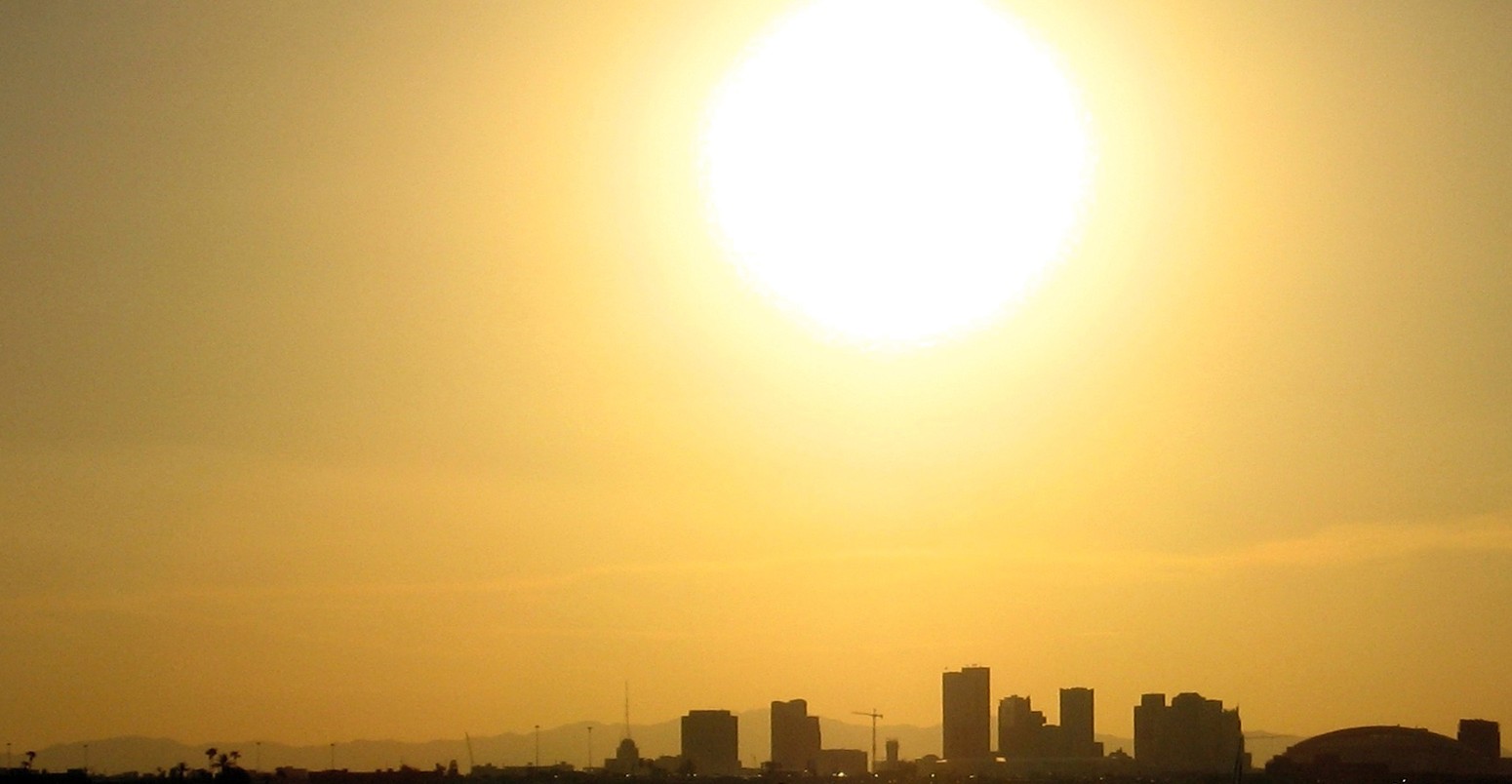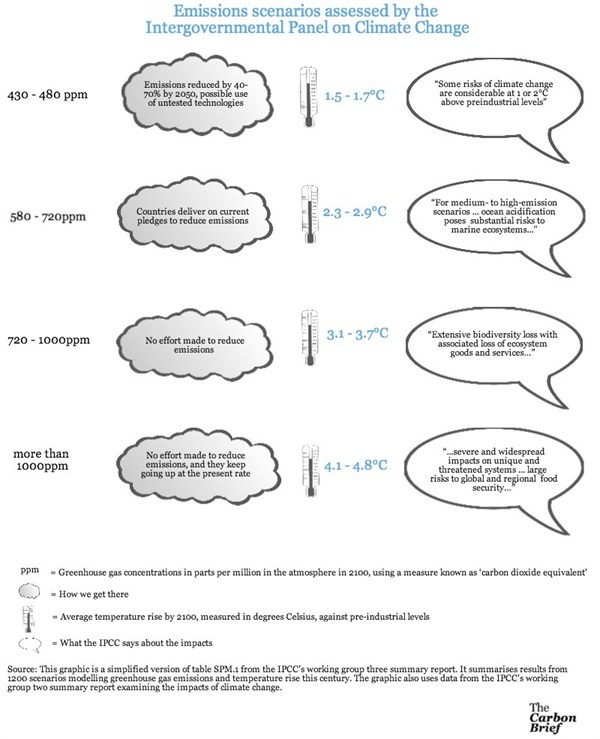
Degrees of change: the IPCC’s projections for future temperature rise
Robin Webster
04.15.14Robin Webster
15.04.2014 | 12:00pmMany governments are trying to reduce greenhouse gas emissions. But unless policymakers raise their ambition significantly, temperatures are likely to rise beyond safe levels. We examine the pathways that could take us towards a two degrees temperature rise by the end of the century – or considerably higher.
On Sunday, the Intergovernmental Panel on Climate Change (IPCC) released the last in a series of three reports, which together assess the physical evidence that climate change is happening, the expected impacts over the course of this century and what would need to happen to curb the rise in greenhouse gases.
Embedded in the reports are the scientists’ projections for how high temperatures are likely to rise this century – and what that’s likely to mean for ecosystems and societies around the world.
Comparing scenarios
The IPCC bases its projections for future temperature rise on two different techniques.
First, the IPCC has created its own storylines, or scenarios, describing how high temperatures are likely to rise in the future and what that might mean. The scenarios vary according to different predictions for how societies develop and how much effort we make to reduce greenhouse gas emissions over the course of this century.
Secondly, the IPCC assesses a large number of scenarios from different experts. For its third report into greenhouse gas emissions, the IPCC assessed 1200 different pathways, created by different modelling teams around the world.
300 of these were ‘baseline’ scenarios – where the governments of the world make little or no effort to tackle climate change, and fossil fuel emissions keep going up at the present rate. The other 900 are ‘mitigation’ pathways, where policies are introduced to limit the rise.
Avoiding two degrees
In order to minimise the risk of “dangerous” human interference in the climate system, the international community has agreed we need to limit temperature rise to two degrees Celsius above pre-industrial levels.
Achieving this limit wouldn’t prevent all the effects. Some risks of climate change are ” considerable” at one or degrees Celsius above pre-industrial levels, the IPCC says. The physical evidence shows that the world is already experiencing adverse effects, including for example Arctic sea ice melt, as a result of a 0.85°C rise.
Temperature rise is limited to less than two degrees by the end of the century in only one of the IPCC’s storylines – a scenario of aggressive mitigation.
As a result of its own modelling and the different scenarios it assessed, the IPCC concludes that avoiding the two degrees rise means reducing global emissions by at least two fifths by 2050, and tripling or quadrupling the share of energy the world gets from low-carbon energy by the same date. It probably also means using new, untested technologies to reduce the level of carbon in the atmosphere, the IPCC says.
Preventing three degrees
The world isn’t on track to avoid a two degrees rise at the moment. So what track is it on?
At the international climate negotiations in Cancun, major economies pledged to limit the rise in greenhouse gas emissions up to 2020. We don’t know what’s going to happen after that, but it gives the IPCC some idea of where we might be going.
If followed up, the IPCC says the Cancun pledges are roughly consistent with scenarios preventing a three degrees rise over the course of this century – but not preventing a two degrees increase.
Topping four degrees
In the first decade of this century, emissions rose faster than ever before. Many of the world’s economies are growing rapidly, and the world’s burning a lot of coal to generate energy. Without explicit efforts to reverse the increase, the rise in emissions going to continue, the IPCC predicts.
In its ‘ business as usual‘ story line humanity continues to burn significant amounts of coal, and greenhouse gas emissions continue to increase at their present rapid rate. This scenario – and others the IPCC assessed where no effort at all is made to reduce emissions – suggest temperatures could rise by 3.7 to 4.8°C by the end of the century, the panel says.
This level of temperature rise is likely to have very significant impacts on the world’s societies and natural systems. At four degrees of warming, global climate risks are “high to very high”, the IPCC says. It would mean:
“…severe and widespread impacts on unique and threatened systems, substantial species extinction, large risks to global and regional food security, and the combination of high temperature and humidity compromising normal human activities…”
We’ve summarised the scenarios the IPCC assesses, and how they match up with its storylines in the following graphic:
The scenarios the IPCC created and assessed don’t predict the future. Instead they give an indication of changing levels of risk to ecosystems and human societies over the course of this century, according to the level of greenhouse gas emissions released by human activities.
Many uncertainties remain. There isn’t enough evidence to know, for example, when different ecosystem tipping points may be passed. At some point the Amazon may reach a point where it starts to dry out, releasing even more carbon into the air. But the IPCC doesn’t know when that’s going to happen.
The scenarios also give an indication of how difficult it’s going to be to reduce greenhouse gas emissions. If the world doesn’t start the job of reducing greenhouse gas emissions until 2030, it could still be possible to prevent the worst effects of climate change. But it would be a lot more difficult and expensive, the IPCC says – and would probably involve the use of as yet unknown technologies to suck carbon from the air.
The IPCC’s overall message is that the risks of “severe, pervasive, and irreversible impacts” increase as temperatures rise. The scenarios in its report give an indication of how likely those impacts actually are.


